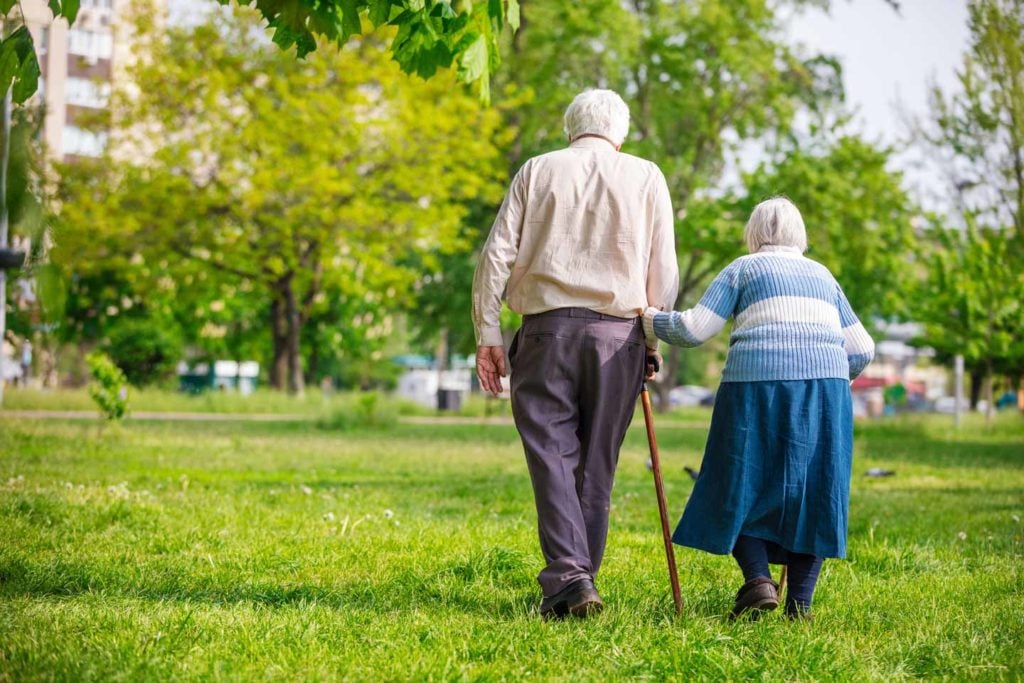Some health practitioners are calling these changes “the silent impact of the pandemic’. For many there is also a “fear element and lack of confidence” about returning back to normal day-to-day life.
Prior to the pandemic, physical inactivity was one of the most important health challenges facing older adults. Inactive older adults have an increased risk of fractures and recurrent falls, they also experience a reduction in quality of life with decreased cognitive functioning.
Many who were very well and active prior to the pandemic have seen a big change in their mobility and health. Disruption to usual routines, restriction of movement, and separation from family and friends meant that networks and habits established to maintain activity levels just stopped. Sedentary behaviours, such as spending excessive amounts of time sitting or reclining (watching television, reading, using mobile devices) can lead to a deterioration in health with increased levels of boredom and a sense of isolation.

Physical decline.
Older adults who don’t get regular exercise may become prone to chronic diseases and weakened muscles. It only takes 5 to 10 days of physical inactivity for your muscles to begin shrinking and wasting away. This can speed the progression of sarcopenia (muscle loss) and can lead to chronic diseases. Low physical activity has been shown to be one of the most common components of frailty and joint pain. Joint mobility, strength, confidence, and aerobic fitness have declined. They have become far more susceptible to falls as a consequence. Day-to-day tasks, such as going upstairs, may have become difficult and can result in deteriorating bone and muscle strength because of inactivity.
Health practitioners have been highlighting the importance of rehabilitating the older population as coronavirus restrictions ease.
According to Age UK ,who asked older people how their health has changed since the start of the pandemic:
- 1 in 3 has less energy.
- 1 in 4 older people is unable to walk as far as before.
- 1 in 5 feel less steady on their feet.
This has led to an overall loss of confidence that they are maybe able to get back to where they were.
Deterioration in diet.
Some older people have lost interest in food and are not eating enough and are suffering from malnutrition. Those that have lost weight are increasingly frail and vulnerable. For many eating alone constantly holds little pleasure. For further information on how you can help see our article on How to spot the signs of Malnutrition. and our article on Why are diet and nutrition so important for the elderly?
Cognitive decline.
Lack of mental stimulation and socialising throughout the pandemic, has resulted in loved ones being confused, more forgetful, and repetitive in conversations. There are many things you can do to try to keep older people busier, that can help stimulate them mentally. See our article on Activity ideas for the elderly and those with dementia.
Dementia and long-term health conditions.
A survey conducted by Alzheimer’s Society with people living with dementia found similar findings, with 82% of people affected by dementia reporting an increase in dementia symptoms during lockdown, including memory loss, difficulty concentrating, and agitation or restlessness
Those with pre-existing health conditions have been badly affected as they have been shielding for the longest and have experienced the most decline as a result of the pandemic.
Mental Health and well-being.
Those people with pre-existing mental health conditions have seen their symptoms worsen and many are struggling for the first time. Many understand they are more vulnerable to COVID-19 and many are now very anxious about leaving the house. Many face a double-edged sword where they are afraid of leaving the house but at the same time cannot cope with the loneliness and isolation at home. For ideas of how you can help see our article on 10 ways to improve mental health and keep your loved one positive.
Depression and Loss of confidence.
Some older people are feeling down, have lost pleasure and purpose in their lives, and feel as if every day is the same. Many are less confident doing normal activities such are going to the GP, going to the shops or meeting up with friends.
Exercise Goals.
It is critical that older adults try to increase levels of physical activity to help boost immune function. As with any new activity, gradual introduction and progression are important, and those who have previously been inactive should seek advice from a healthcare professional for new exercises. Online instructor-led classes could be useful. Resistance exercise is a proven method to increase muscle mass, strength, and mobility, even for people in their 90s.
Exercise programs you can do at home are especially important and are a good way to maintain or even improve your muscle health and mobility. Exercise also helps prevent falls, a common cause of disability and hospitalization for older adults.
There are some great online classes tailored just for them:
- NHS Fitness studio
- Joe Wicks has a class especially for seniors, take a look.
If their mobility is limited, chair exercises and getting out in the garden, if they can, are good.
Choose activities they enjoy.
Evidence suggests that people prefer exercises that fit more easily with their everyday activities. We are generally more motivated when we can do exercise with others and are more likely to form a habit. During times of social distancing, exercise programs via the internet can really help facilitate this.

